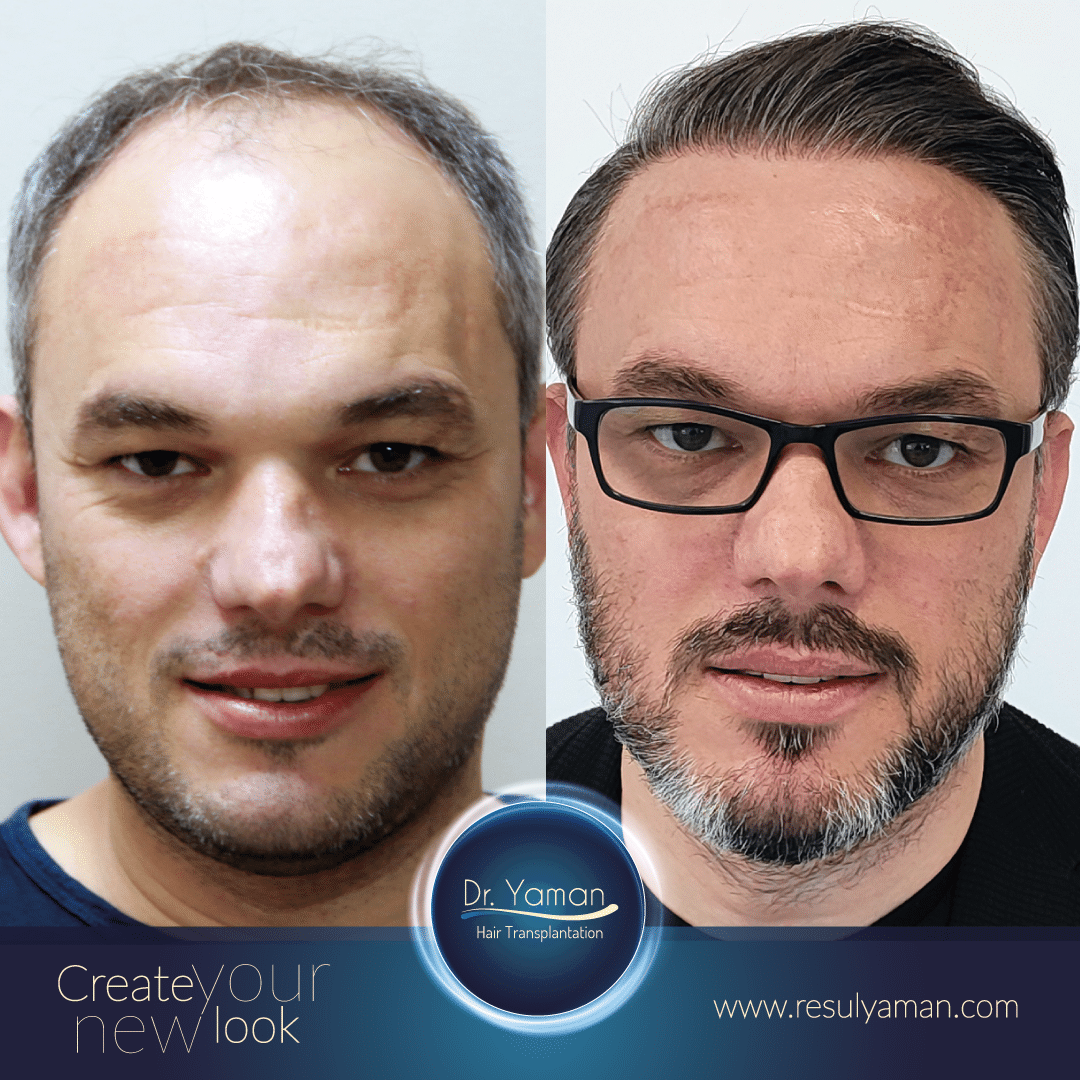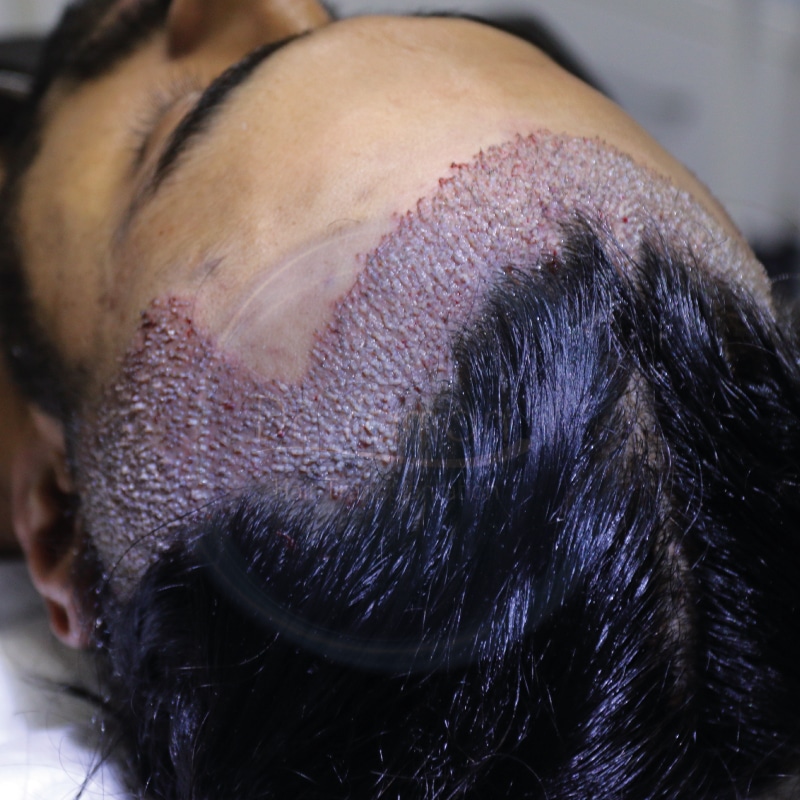An important part of a hair transplant procedure is the recovery and what happens after and something you have to be prepared for is redness of your scalp. This is a common side effect of the recovery process and redness after hair transplant procedures is completely normal.
I understand that this can seem scary though so in the below guide, I explain redness after hair transplant surgeries, why it happens, and how you can manage it effectively.
What is Post-Transplant Redness?
With any hair transplant process such as the DHI technique or FUE, there is redness during the recovery. Redness occurs both on the skin of your scalp, and the scabs that form around the hair grafts and the donor area where hairs were taken from.
This is completely normal and it is known as erythema which is essentially a type of inflammation. Redness occurs because of the trauma and stress your scalp has been exposed to during the procedure.
Hair transplant surgeries are painless and they are not invasive as they only require local anesthetic so don’t worry – your head won’t be thumping or feeling like it’s being cut open. However, surgical tools are still used and redness will occur due to the volume of hair grafts extracted and implanted.
Typical timeline for redness after hair transplant
Usually, most patients can expect the redness to disappear after 10-14 days. This is the common recovery timeline but please be aware that every individual is different. Your healing could progress much quicker, or it could be slower and in some instances, redness can persist for up to a month.
Effective Recovery Tips to Manage Redness
There are many things you can do to ease the redness and manage your recovery process and I invite you to read our inspiring DHI hair restoration stories to see how people cope. Not only that, but I have listed some simple tips below to help redness after hair transplant procedures.
Avoid scalding showers
I love a boiling hot shower as much as the next person but having your shower too hot is a sure-fire way to cause pain and increase the inflammation in your scalp. For the immediate recovery you will have to make do with warm showers!
Protect your scalp from sun exposure
Sun damage will make your redness worse, but it can also damage your hair transplant. Consider wearing a hat when outside and avoiding direct exposure for at least two weeks after your hair transplant.
Avoid over-chlorinated swimming pools and hot tubs
We all know how much chlorine in pools and hot tubs can sting so imagine what it would feel like on your reddened scalp. Needless to say, stay away from any chlorinated water until your redness has completely gone.
Don’t itch your scalp or pick the scabs

Keep yourself hydrated
Hydration helps reduce inflammation but is also vital for the function of your body. Make sure that you drink plenty of water after your hair transplant!
Seeking Professional Advice
If you are concerned and the redness isn’t reducing after a few weeks it could be time to seek professional advice from your hair transplant surgeon. Most of the time, it will just be a slow recovery and your scalp will take longer to heal. However, some minor complications can occur that may need treatment to protect your scalp and hair transplant:
- Cellulitis
- Folliculitis
- Skin necrosis
- Cysts
Cellulitis is a type of skin infection that can occur after a hair transplant and it happens as a result of bacteria invading your follicles. With this condition, the redness can spread, you may experience pain in your scalp, and a fever can develop. Cellulitis must be treated ASAP and a course of antibiotics is typically the answer.
Infections around the grafted hair follicles can be common, with the most frequent being Folliculitis. This is where small red spots with a puss-filled yellow head develop around your hair. The spots can cause itching and scalp pain. In mild cases, treatment involves simply letting the infection run its course but we still advise speaking to your surgeon as they may want to give you a topical cream or a course of antibiotics.
The worst case scenario is if the redness turns into skin necrosis which means the surgeon has not done the work properly. Here, the skin on your scalp essentially dies and turns black and you have to have it surgically removed – the resulting areas will scar and new hair won’t grow.
Lastly, cysts can form under your skin at the site of hair grafts or the donor area. With a skilled surgeon, this should never happen and cysts typically result when hair grafts haven’t been removed or implanted properly.
Easing Redness, Easing Recovery
I hope you have found this guide on redness after hair transplant surgeries useful. It’s something you shouldn’t worry about as it’s a natural post-surgery occurrence. However, you must take your recovery seriously and do what you can to protect your scalp.
 WhatsApp
WhatsApp Get Mail!
Get Mail!
 English
English Italiano
Italiano Español
Español Türkçe
Türkçe Português
Português Français
Français Deutsch
Deutsch عربي
عربي



